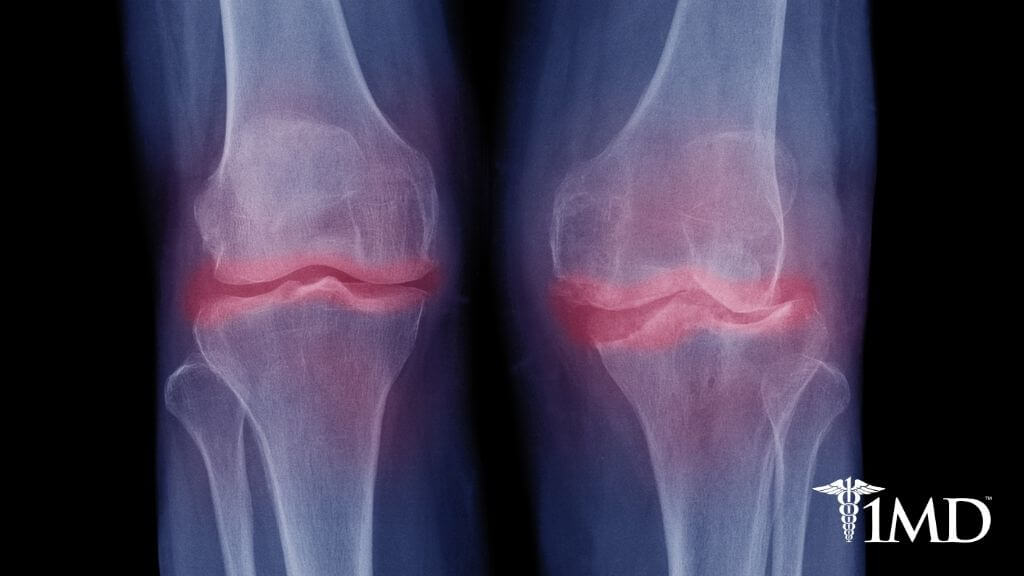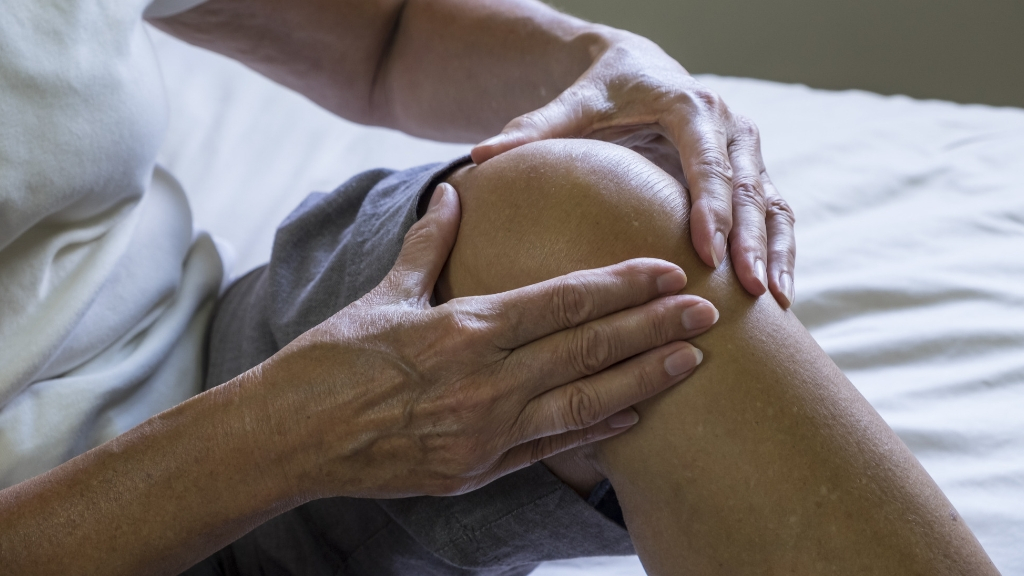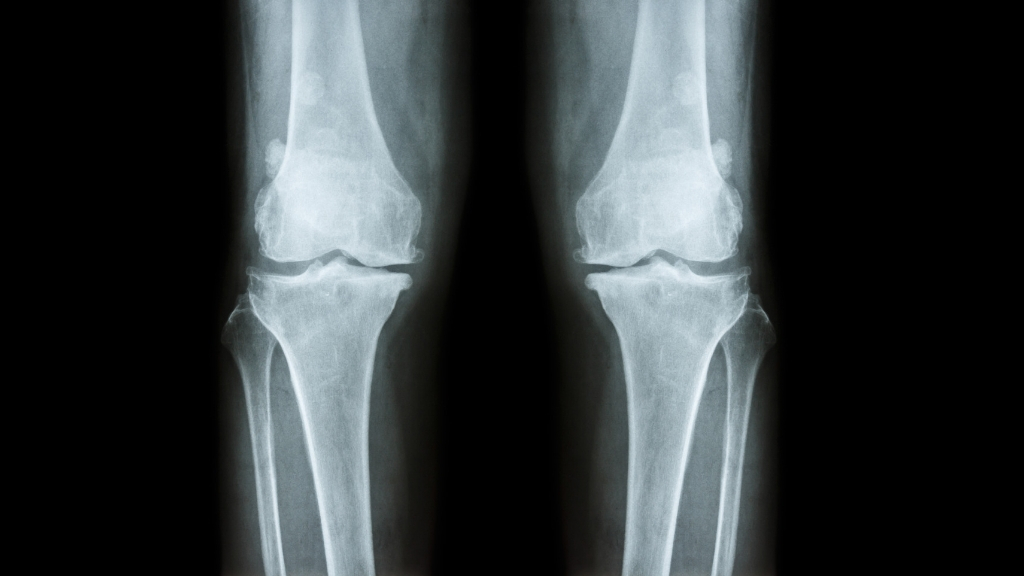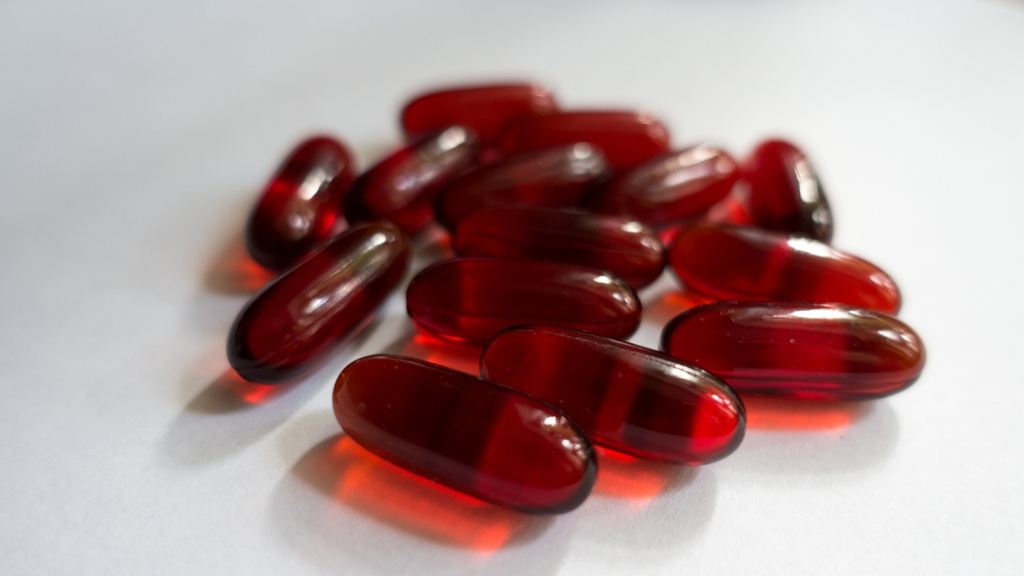What Are the Symptoms of Osteoarthritis? + Natural Treatment Tips
8 minute read
Osteoarthritis is a common joint affliction. While some younger individuals develop the condition, it is more common among those over the age of 65.
As common as it is, the good news is that with early detection, treatment for osteoarthritis can be effective. There is no cure, but identifying the symptoms and working to protect joint health will keep you moving at your own pace.
Understanding Osteoarthritis
The causes for osteoarthritis are unclear and several factors can influence whether it develops or not. A family history of osteoarthritis can increase your risk of developing the condition, as can certain lifestyle factors such as obesity, overuse of joints, and your posture.
As we get older, our risk for arthritis also increases as the joints and bones naturally wear over time. Heavy use, previous injury, and aging cause your cartilage to break down, like the knees of a catcher in baseball.
This in turn causes your bones to rub together, causing pain and other notable symptoms. The prompt identification of these symptoms is essential for the prevention of more serious damage.
Symptoms will vary between individuals, but in general the signs of osteoarthritis you want to look out for are below.
Pain: Aching pains are common complaints of osteoarthritis, as are muscle pains. Typically these aches are worse after periods of inactivity and sleep.

The joints are also often tender to touch and pain can occur even when the joints are not in use. The pain you feel is caused by bones rubbing together, inflammation in the area, pinched nerves, and/or the development of bone spurs.
Stiffness: Stiffness and trouble moving almost always occurs in the morning for those with osteoarthritis. Joints become settled during sleep and moving them can be painful. During these times your joints will feel achy and rigid, and movement will be strained.
Swelling: Swelling is typically associated more with rheumatoid arthritis, but it also occurs with osteoarthritis. Bone-on-bone contact is irritating and contributes to swelling as does the inflammation in the area.
Bone spurs: These bony projections occur naturally but can also result from inflammation in a joint. These small, hard lumps are not painful in themselves, but when they rub against bone and cause irritation, pain will result.
Fatigue: Because of the restricted movements and additional effort required to move aching and painful joints, many with osteoarthritis complain of fatigue. Inflammatory markers called as cytokines are also known to cause fatigue when present for extended periods of time.
Mood disorders: The chronic pain of osteoarthritis causes stress and anxiety, and with time this can develop into anxiety-related disorders or depression. In addition to this, the restriction of movement and decreased quality of life that can accompany the condition also increases your risk for depressive moods.

Identifying symptoms is important not just for seeking treatment, but in order to prevent more serious problems. Osteoarthritis can hinder quality of life, but it is not typically life-threatening. There are, however, signs to watch for that indicate a more serious problem, including:
♦ Severe, unexplained joint pain
♦ Joint pain lasting longer than three days
♦ Fever and unexplained weight loss
♦ Difficulty moving the joint
♦ Swelling and redness around the joint
Treatments for Osteoarthritis
Identifying the symptoms is the first step. After a diagnosis, the next step is to find treatment options that work to relieve pain and boost overall joint health.
| Related: How to Fight Osteoarthritis Flare-Ups Naturally |
Typically antidepressants and painkillers are prescribed to ease symptoms, but these are not always effective. Medications can also cause unpleasant side effects, which leave more natural therapies as a favored option.
Several natural ingredients are important when it comes to osteoarthritis. KrillFlex is the perfect supplement for easing osteoarthritis symptoms and taking care of your joints. It contains astaxanthin, krill oil, and hyaluronic acid, all of which are ideal mobility and joint discomfort issues.

This proprietary blend is more effective at treating osteoarthritis than the standard chondroitin and glucosamine supplements.
Zanthin Natural Astaxanthin
Astaxanthin is a strong antioxidant that works to scavenge the free radicals known to cause joint pain and deterioration. The oxidative damage caused by these free radicals affects cells and tissues and can trigger widespread pain.
In small doses, free radicals are important, but excessive amounts can be dangerous with enough antioxidants, and KrillFlex gives you just what you need to keep them under control.
Hyaluronic Acid
This is a proprietary, low molecular weight acid that serves to nourish the synovial fluid in your joints. Depletion of this fluid contributes to inflammation, as bones rub together and decrease mobility.
When taken orally, hyaluronic acid is absorbed efficiently and put to immediate use relieving joint discomfort.
Pure Krill Oil
Similar to the more well-known fish oil, krill oil is full of health benefits and can support optimal joint health. Unlike fish oil, krill oil is more bioavailable, which means it is absorbed more quickly and at greater amounts.
| Related: The Arthritis Diet: Eating Your Way to Inflammation Relief |
You also get more DHA and EPA in krill oil, which are the essential omega-3 fatty acids you need for optimal health. Both DHA and EPA play fundamental roles in protecting cell membranes and reducing joint pain caused by osteoarthritis.

Because our joints absorb a lot of shock and pressure, they are prone to wearing out quickly. Krill oil helps to foster efficient regeneration and rebuilding of joint tissues, so they can keep you moving and prevent additional pain.
The KrillFlex capsule is designed to provide joint nourishment as well as relieve symptoms of inflammation. In this way it can serve as both a pain reliever and boosting agent for joint health. The patented and clinically-prove ingredients start working within seven days, and when it comes to osteoarthritis, sooner is always better than later.
The Bottom Line
Early identification and treatment is the best way to handle osteoarthritis. Studies have shown that early treatment is more effective at relieving symptoms and preventing future pain and complications.
Supplemental support is quick and effective as well as completely natural. Although nothing you read on the internet should take the place of your physician’s advice, when taken regularly, natural supplements work to ease pain, reduce inflammation, and boost joint health.












